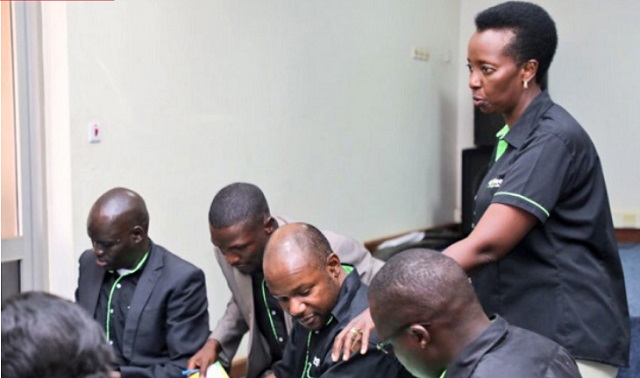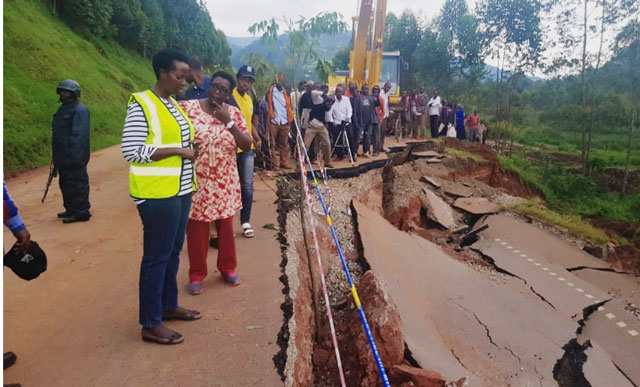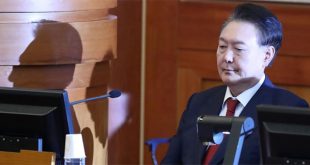
An analysis of the rationalising of gov’t agencies does not reveal the intended cost cutting
NEW ANALYSIS | IAN KATUSIIME | The proposed merger of Uganda National Roads Authority (UNRA) with its mother ministry- Works and Transport hangs over the roads agency like the Sword of Damocles. After a three year lull, the proposed mergers have swung back this year with UNRA again emerging as the main target of a government move to ostensibly cut costs and create more efficiency in service delivery.
A weighty document seen by The Independent about the mainstreaming and rationalising of government agencies under the Ministry of Works and Transport makes the merger of UNRA seem like a foregone conclusion until the reality of government decision making sets in.
On February 22, Cabinet formally agreed to merge government agencies. In the infrastructure docket, Uganda Road Fund and UNRA would be under the Ministry of Works. Subsequently, a team from the ministry put together a technical committee to “examine how UNRA would be re-absorbed into the ministry without necessarily obliterating their functions,” the report published in August stated.
Critics of the merger have argued time and again that UNRA has put in place a mechanism of division of labour that the Ministry of Works would find hard to replicate in its current state. The technical committee has its work cut out; to examine institutional arrangements, the legal and policy framework and redefine roles and responsibilities for the large staff structures for all the three entities; the Uganda Road Fund, UNRA , and the Ministry of Works.
Experts say this will be the real test of the merger when technocrats from the Ministry of Works who are said to be sidelined from their core mandate of designing and executing Uganda’s road infrastructure finally have to superintend over the exercise of reorganising the 1400 staff-UNRA.
The Ministry of Works technical staff is led by Waiswa Bageya, the Permanent Secretary, who joined the ministry in 2016. A career civil servant who has served in similar roles at the Inspectorate of Government, Directorate of Ethics and Integrity, and Undersecretary at Police, the slog of collapsing UNRA under the structure of the ministry falls on his desk.
A source who has worked closely with Bageya described him as “consultative” in his work style.
According to the proposed Ministry of Works and Transport macro-organisational structure, there will be an Office of the Engineer- in-Chief right below the Permanent Secretary. The Office of the Engineer- in-Chief will then have a Director of Roads and a Director of Technical Services under it. The ministry will have only three directorates including the Directorate of Transport. These directorates are broken down into divisions to take over the work that is currently done by the nine directorates of UNRA.
Some of the busiest directorates of UNRA like Roads and Bridges, and Road Maintenance which do the nuts and bolts of the road work will be subsumed under the numerous divisions created in the new structure.
“The office of the Executive Director is recommended for absorption as Commissioner for National Roads. Functions of Departments in the ED’s Office will be taken over by relevant departments” a similar report by the Ministry of Works on Sept. 20 states.
The report was compiled while UNRA executive director Allen Kagina was in the field inspecting “oil roads” in the areas of Hoima and Bullisa with her staff alongside MPs on the Physical Infrastructure Committee. The MPs, mostly new, were on an orientation tour where they got a glimpse of country’s road sector challenges such as land compensation, conflicts between contractors and host communities and the huge financing gaps of the road projects.
Staff and wage bill increase
The proposed structure has 2452 staff positions and its total wage bill will be Shs42 billion.
“After mainstreaming UNRA and URF, with the increased workload under the MoWT departments, the staff establishment and wage will increase by 1800 and Shs31 billion…” the report by the ministry states. The latter statement in the ministry’s report reads like an indictment on the ministry’s own objective.

The stated rationale for the re-organisation and restructuring of UNRA includes among other things: reducing the cost of doing business, avoiding duplication of roles and to “rationalise government expenditure in line with the National Development Plan III and Uganda Vision 2040”.
Yet by the ministry’s own account, the annual wage bill will shoot up by a no small Shs31 billion and the staff numbers will go up by 1800.
The staff increase would slightly be above the headcount at UNRA- meaning the intended rationalisation is no more than disbanding the Ministry of Works and Uganda Road Fund and retaining the current UNRA structure with some expert hires.
Lobbyist agendasWith the paper work out of the way now comes the hard part of the policy battles, the ministries supposed to flesh out the merger and the lobbyists each with their agendas.
UNRA has always been a subject of intra-government wars. During the last round of the proposed mergers, then Works minister Azuba Ntege was said to be having a frosty relationship with the UNRA boss Kagina over the lions share funding allotted to UNRA in the national budget.
To complete the merging process, the Ministry of Justice must handle the legal issues which involve sending bills to parliament for approved mergers. The Ministry of Finance is also tasked with constituting a committee to roll out change management processes while the Ministry of Public Service has the tall order of monitoring the performance of the approved structure among other arduous tasks.
However, all these recommendations are effective from July 1, 2023, according to the report. Going by the history of the merger, the time can only suck the momentum out of the exercise and make the mainstreaming of UNRA and URF under the ministry of Works a more complex exercise.
Gen. Saleh’s hand
The first round of mergers in 2018 was deferred for three years meaning that the proposed mergers are either a moving target if not a tactic by those who hold power in government over those they consider lesser mortals.
It all started with a report written by a Gen. Saleh-led team. The idea was then known as the Government Rationalisation Plan (GRP) with a plan to scale down a number of agencies. The Saleh report pointed out that these agencies were spending a lot on salaries and roles were being duplicated. But it met stiff resistance among government bureaucrats; high and mid-ranking. Fast forward and cabinet set out to do what the Saleh team wanted to accomplish.
At the time, other experts said that the rationalisation could not be effective because the head of the institutions, President Museveni, has never showed keen interest in reforming public service. They pointed at the bloated list of presidential appointees, and how Museveni routinely bypassed institutional checks and balances to implement his agenda.
In 2020, Kagina’s contract was renewed for another five year term but UNRA is bedeviled by an apparent restructuring exercise.
Those in favour of merging UNRA with its mother ministry criticise the roads body for being a mere procuring entity, hiring too many consultants on road projects, inflating road construction unit prices and hiring lots of non-engineers or what some prefer to call “sociologists” amid other issues such as lack of oversight from the Ministry of Works.
In its defence, UNRA says it is responsible for short and medium term planning where collection of data is vital for road maintenance. It also argues that since not all road projects are designed in house, it requires hiring of consultants for supervision. In addition, UNRA says its non-engineers are critical for other areas like land compensation which creates mounting legal issues for road projects. During the tour of the oil region, Kagina told MPs that in 2020, UNRA faced 121 cases in court and 101 of those were a result of land acquisition.
****
 The Independent Uganda: You get the Truth we Pay the Price
The Independent Uganda: You get the Truth we Pay the Price



